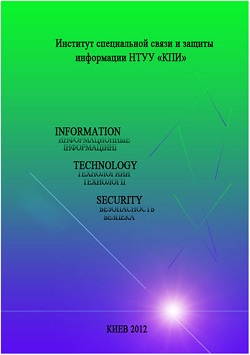Maliciously created hardware
DOI:
https://doi.org/10.20535/2411-1031.2012.1.1.53678Abstract
A survey of malicious hardware, its hidden channels, possibilities of its loading in the integral circuits including FPGA is considered. The methods for malicious hardware searching and preventing to its loading onto the device are highlighted as well. A conclusion is made that FPGA is the most safe device against malicious hardware loading.
References
Adee S. The Hunt for the Kill Switch // IEEE Spectrum, 2008. - N5. - Р. 34-39.
King S.T.,Tucek J., Cozzie A., Grier C., Jiang W., Zhou Y. Designing and implementing malicious hardware // Proceedings of the 1-st Usenix Workshop on Large-Scale Exploits and Emergent Threats, LEET'08. USENIX Association Berkeley, CA, USA, 2008. - 8 р.
Huffmire T., Irvine C., Nguyen T.D., Levin T., Kastner R., Sherwood T. Handbook of FPGA Design Security. –Springer, 2010. – 177 р.
Security Trends for FPGAs. From Secured to Secure Reconfigurable Systems / Editors: B.Badrignans, G.Gogniat, J.L.Danger, L.Torres, V.Fischer. –Springer, 2011. – 196 p.
Lieberman J.I. National security aspects of the global migration of the US semiconductor industry // White Paper, June 2003. Congressional Record: June 5, 2003 (Senate) – P. S7468-S7471.
Obama B.H. Remarks by the President on Securing Our Nation’s Cyber Infrastructure (Washington DC, May 29, 2009), режим доступу: http://www.whitehouse.gov/ the_press_office/Remarks-by-the-President-on-Securing-Our-Nations-Cyber-Infrastructure/.
Secure Semiconductors: Sensible, or Sisyphean? From TIC to IRIS at DARPA. // Defense Industry Daily, 2011. - 16 Feb., режим доступу: http://www. defenseindustrydaily.com/Secure-Semiconductors-Sensible-or-Sisiphyean -04928/
Hadzic I., Udani S., Smith J., FPGA viruses // Proceedings of the 9-th Int. Workshop on Field-Programmable Logic and Applications (FPL’99), Glasgow, UK, August, 1999.
Wang X., Tehranipoor M., Plusquellic J. Detecting malicious inclusions in secure hard-ware: challenges and solutions // Proc. IEEE Workshop on Hardware Oriented Security and Trust (HOST), Anaheim, CA, June, 2008, 2008. - P. 15-19.
Trimberger S. Trusted design in FPGAs // Proceedings of the 44th Design Automation Conference, San Diego, CA, USA, DAC 2007, June 4–8, 2007, – P. 1.5-1.8.
Sarma S.E., Weis S.A., Engels D.W. Radio-Frequency Identification: Security Risks and Challenges // RSA Laboratories Cryptobytes, Spring 2003. –V.6, N1. – P. 2-9.
Котов В.Е. Введение в теорию схем программ. – Новосибирск-: Наука, 1978. – 256 с.
Tiri К., Verbauwhede І. Synthesis of Secure FPGA Implementations // Proceedings of International Workshop on Logic and Synthesis, 2004. – P. 224-231.
Smith S.C., Di J. Detecting Malicious Logic Through Structural Checking // Proc. IEEE Region 5 Techn. Conf., 20-22 April 2007, 2007. - P. 217-222.
Downloads
Published
How to Cite
Issue
Section
License
Copyright (c) 2020 Collection "Information technology and security"

This work is licensed under a Creative Commons Attribution 4.0 International License.
The authors that are published in this collection, agree to the following terms:
- The authors reserve the right to authorship of their work and pass the collection right of first publication this work is licensed under the Creative Commons Attribution License, which allows others to freely distribute the published work with the obligatory reference to the authors of the original work and the first publication of the work in this collection.
- The authors have the right to conclude an agreement on exclusive distribution of the work in the form in which it was published this anthology (for example, to place the work in a digital repository institution or to publish in the structure of the monograph), provided that references to the first publication of the work in this collection.
- Policy of the journal allows and encourages the placement of authors on the Internet (for example, in storage facilities or on personal web sites) the manuscript of the work, prior to the submission of the manuscript to the editor, and during its editorial processing, as it contributes to productive scientific discussion and positive effect on the efficiency and dynamics of citations of published work (see The Effect of Open Access).

